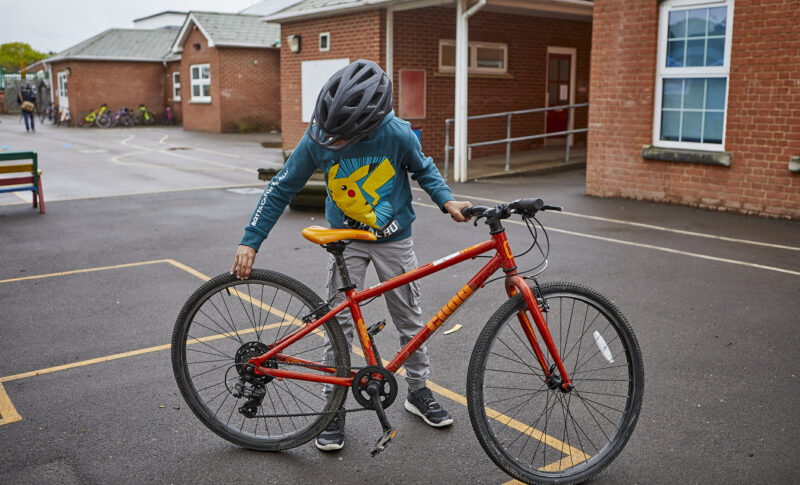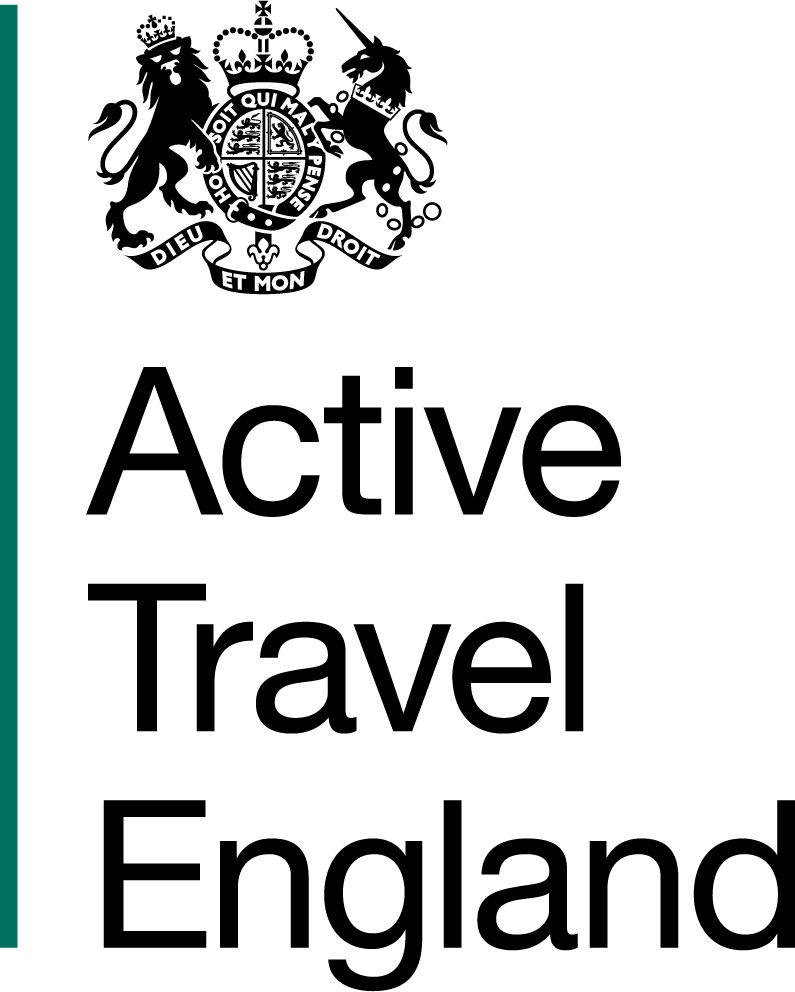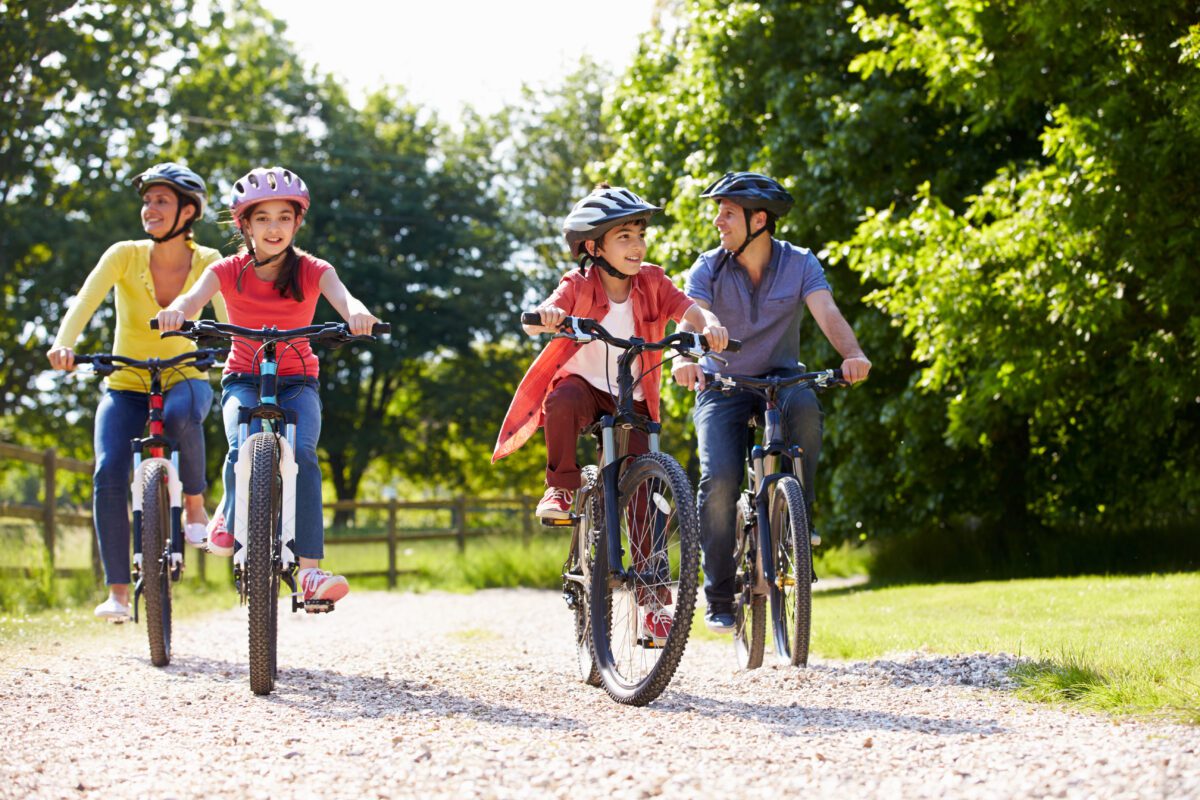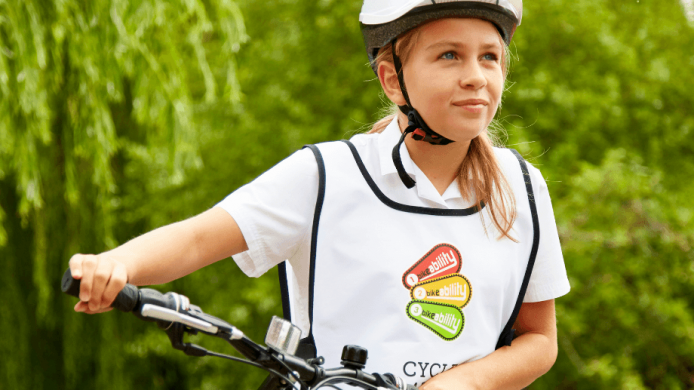Cycling is one of the best ways for children to develop independence, build confidence, and stay active. But just like with any vehicle, safety starts with the tyres. Tyres are the only contact point between the bike and the road, which means keeping them in good condition is essential for a smooth, safe ride. As TyreSafe partners with Bikeability to promote basic tyre safety checks to the next generation of road users, we’re encouraging parents to get involved and help young cyclists develop good habits early.
By teaching children how to inspect their bike’s tyres before setting off, parents can empower them to take responsibility for their own safety and avoid unnecessary risks. Here’s a simple guide to help parents and children perform basic tyre checks together.
1. Check tyre pressure – is there enough air?
One of the most important checks is making sure the tyres are properly inflated. Under-inflated tyres can make pedalling harder, reduce control, and increase the risk of punctures. On the other hand, over-inflated tyres can make the ride uncomfortable and lead to poor traction.
How to check:
- Press down gently on the tyre with your thumb. It should feel firm but with a little give.
- For a more accurate reading, use a bike tyre pressure gauge and check against the recommended pressure listed on the tyre’s sidewall. Most children’s bikes will need a pressure between 30–50 PSI, but this varies depending on the type of bike.
- Top up the air with a bike pump if the tyres feel too soft.
Tip for parents: Teach your child to use a pump with a pressure gauge so they can monitor and maintain the correct tyre pressure over time.
2. Look for visible damage – is the tyre safe?
Checking for visible damage is another essential step. Tyres take a lot of wear and tear, and cuts, punctures, or embedded debris can cause problems during a ride. Damaged tyres can lead to sudden deflation, putting young cyclists at risk of losing control.
How to check:
- Spin the wheel slowly and look for any cuts, cracks, or bulges in the tyre.
- Check the tread for sharp objects like glass, thorns, or stones that may be stuck in the rubber.
- Make sure the tyre isn’t worn out. A smooth, worn tread means it’s time for a replacement.
Tip for parents: Encourage children to make this a habit before every ride. A quick once-over can prevent accidents and costly repairs.


3. Inspect for wheel alignment – are the tyres sitting properly?
Even if the tyres are in good shape, they need to be properly aligned for a safe and smooth ride. Misaligned wheels can cause instability and make the bike harder to control.
How to check:
- Lift the bike and spin the wheels. They should spin freely without wobbling or rubbing against the brake pads.
- If the wheel wobbles, it may need to be realigned. This is best done by a professional at a local bike shop.
Tip for parents: Encourage your child to let you know if they notice anything unusual when riding, such as a wobbly wheel or strange noises.
4. Check the tyre valves – are they secure?
The valves on the bike tyres need to be secure to maintain air pressure. Loose or damaged valves can cause slow leaks, leading to under-inflated tyres.
How to check:
- Make sure the valve caps are tightly secured.
- If the valve feels loose, tighten it by hand or ask for help at a local bike shop.
Tip for parents: Show your child how to add air and tighten the valves themselves – it’s a skill they’ll use for years to come.
Why start early? Building good habits for life
Teaching children to perform these simple tyre checks before each ride instills a sense of responsibility and awareness from a young age. As they grow and eventually transition to driving cars, these basic skills translate into understanding the importance of tyre safety on all types of vehicles.
A child who learns to check their bike tyres will be more likely to perform regular tyre inspections on a car later in life – helping to reduce the risk of breakdowns and accidents.
A quick pre-ride tyre safety checklist:
- Air: Are the tyres properly inflated?
- Damage: Are the tyres free from cuts, cracks, or embedded objects?
- Alignment: Do the wheels spin smoothly without wobbling?
- Valves: Are the tyre valves secure and free from leaks?
Final thoughts: safety starts with small steps
By encouraging children to take a few minutes to check their tyres before heading out, parents are giving them the tools to stay safe on the road. TyreSafe and Bikeability are committed to helping young cyclists develop these essential habits early, ensuring that safety becomes second nature as they progress on their journey toward becoming responsible road users.
So, before your child sets off on their next adventure, take a moment to check those tyres – because safer tyres mean safer rides.
This is a paid for advertisement feature.




